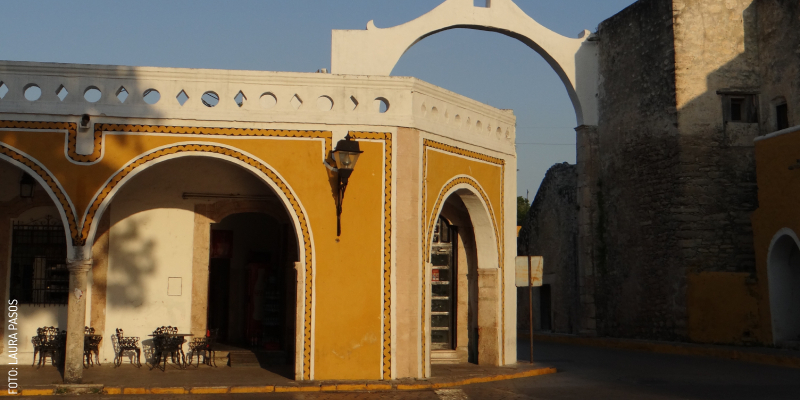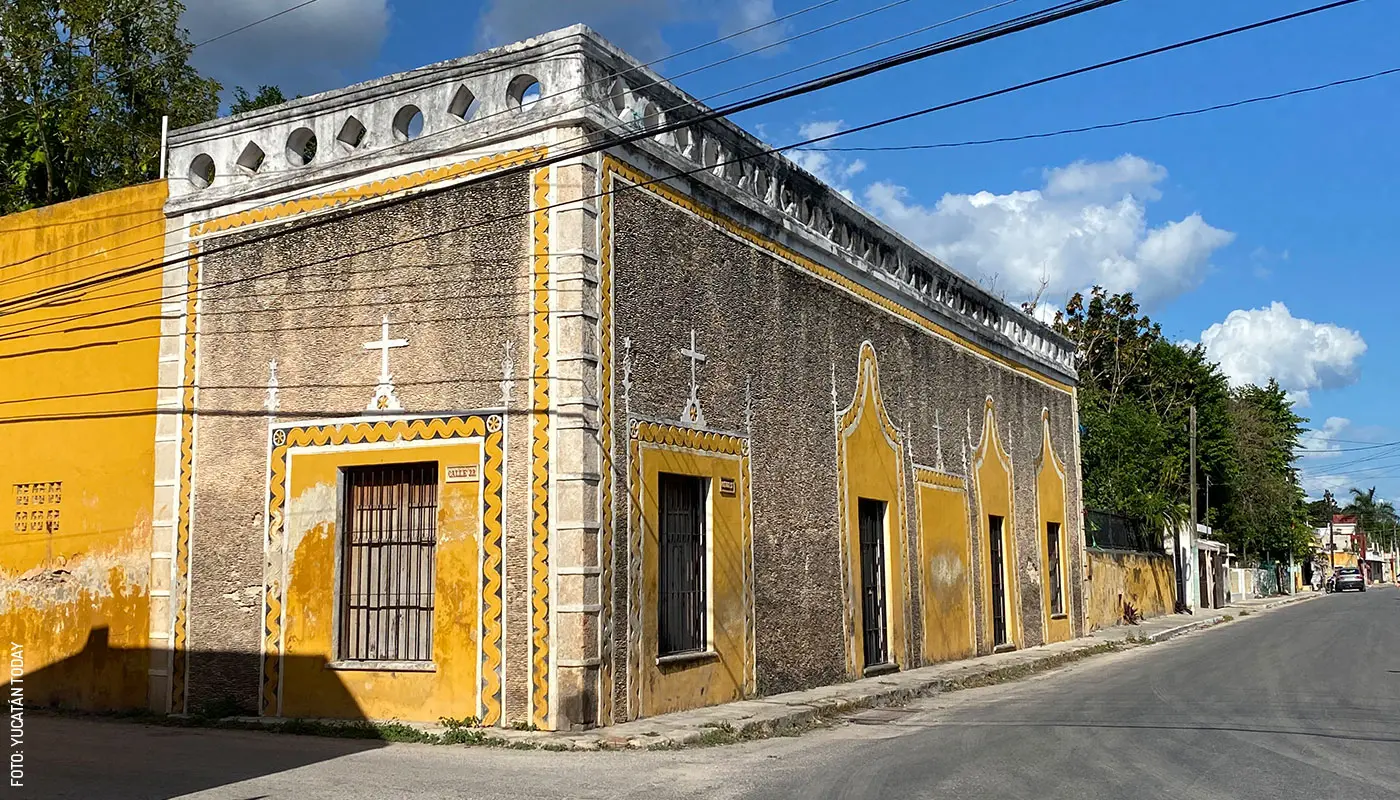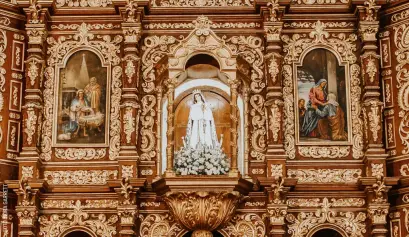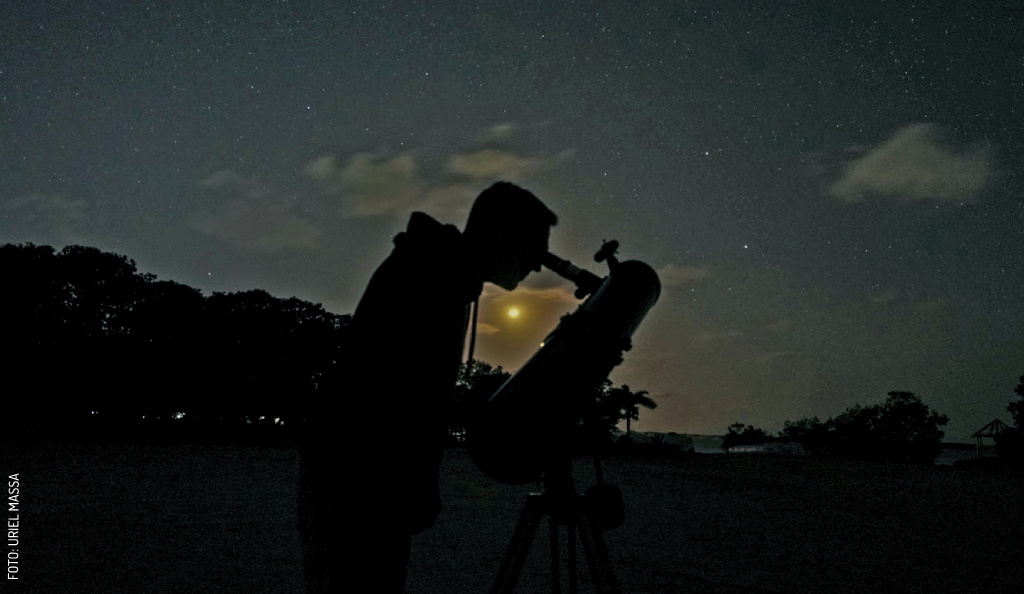Izamal
Get to know Izamal, Yucatán! In this special corner of Mexico, known as “The Yellow City,” history, culture and magic intertwine to create an unforgettable experience. Named as one of Mexico's Pueblos Magicos, Izamal enchants visitors with its cobblestone streets, colonial buildings bathed in vibrant yellow hues, and rich Maya heritage.
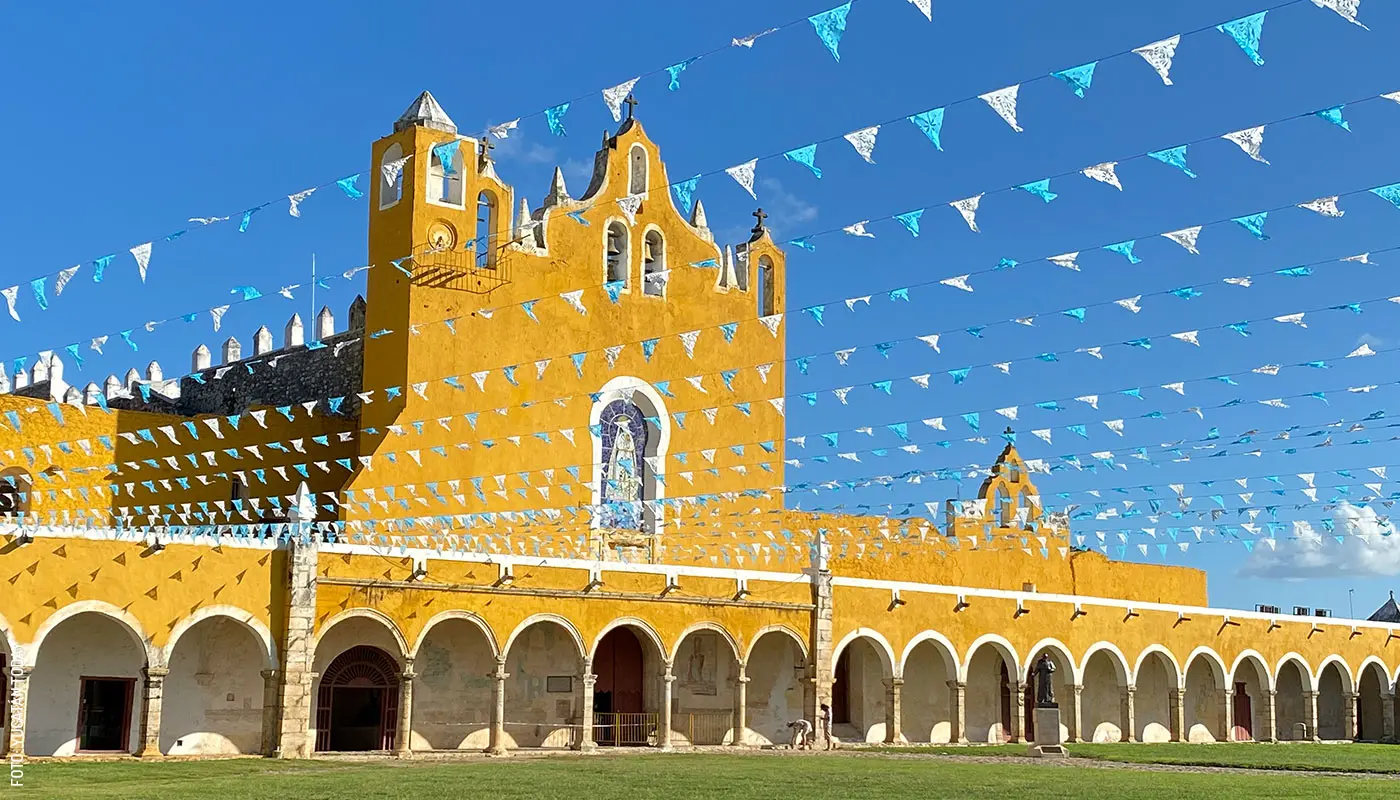
Izamal, the first Magical Town of Yucatán since February 16, 2002, is a destination that steals your heart with its vibrant beauty and fascinating history. Also known as the City of Three Cultures, the City of Hills, or simply the Yellow City, Izamal has been a ceremonial center throughout various eras. Like an artist of time, it combines Maya vestiges, colonial constructions, and modern life into a single canvas.
We know Izamal has already earned a spot on many people's dream destination lists, but this time, I want you to look beyond its iconic yellow walls. It’s time to explore its more emerging side! And while we're here, why not venture out to discover the hidden gems and nearby small towns surrounding this Magical Town that shines like the sun?
Izamal, the Yellow City of Hills and Three Cultures

As you read above, the Magical Town of Izamal is known in Yucatán as the City of Hills. That’s because, it’s said, for a very long time, the city’s many Maya constructions were abandoned to the point that they looked like mounds. Not too long ago, Izamaleños still called the pyramids “Cerros” (hills).
On the other hand, these Maya remains’ coexistence with impressive colonial buildings (such as the San Antonio de Padua convent) and, of course, modern life in México, have given the city a second nickname: the City of Three Cultures.
Izamal’s third moniker is the Yellow City, and it’s easy to see where that comes from: every building in the city is painted in this cheery color. There are countless legends aiming to explain why that is; the truth of the matter is that, in Izamal, buildings have been yellow since the 1960s, and the specific hue was standardized in 1993, to coincide with pope John Paul II’s visit to the city.
A look at the history of Izamal
Izamal tells a story spanning over 2500 years of occupation. As a Maya city, its heyday began in the Proto Classic period (150 - 250 CE), and its decline in the early Post Classic (1000 - 1200 CE), when Chichén Itzá surpassed it in importance. From its main square, four Sacbés (pre-Hispanic walkways) connected the city in each cardinal direction; of those, only two remain: the one that leads to the Aké archaeological site (32 km or 20 mi west) and the one that leads to Kantunil (22 km or 14 mi south). From the original site, the structures that remain have become part of the city, and as such, they’re free to explore every day from 8 am to 5 pm.
It was precisely the site’s evident relevance and the monumentality of its structures led the Spanish settlers to establish the San Antonio de Padua convent in Izamal, designating it as an "Indian village" (unlike cities such as Mérida and Motul, which were considered "Spanish towns").
What to see and do in Izamal
You’ll know you’ve arrived in Izamal when you find yourself surrounded by vibrant yellow houses and buildings that beautify the landscape. In front of the main square, known as Zamná or Itzamná, the Convent of San Antonio de Padua awaits you, home to the second-largest atrium in the world.
Convento de San Antonio de Padua (St. Anthony of Padua Monastery)

Izamal’s Convento de San Antonio de Padua was founded in 1549 by Friar Diego de Landa, who is perhaps best known for the Maní Auto da Fe in which a significant portion of the pre-Hispanic Maya knowledge was destroyed. The monastery was built on top of a Maya temple called Pap Hol Chac; the added elevation makes the Convento one of Yucatán’s most picturesque lookout points. Finished in 1561, the massive closed atrium is surrounded by 75 arches; at almost two acres, this impressive atrium is the largest one in the Americas, and the second largest in the world, only after St. Peter’s Square in Rome. In 1993, Izamal’s Convento de San Antonio de Padua was one of the sites visited by Pope John Paul II; you’ll see a statue commemorating the event, as well as his denouncement of colonialism against indigenous people throughout the continent, from Alaska to Argentina.
Inside the church itself, you will see the beautifully restored altarpiece, the stained-glass window of St. Francis of Assisi, and many examples of religious art along the walls. The star of the baroque altarpiece is Our Lady of Izamal, Queen and Patron Saint of Yucatán. Nuestra Señora de Izamal is celebrated every December 8, as she is a representation of Our Lady of the Immaculate Conception. You can also visit her dressing room, an ample and elegant space where the Virgin’s elaborate dresses and accessories are kept for exhibition.
La Virgen de Izamal (Our Lady of Izamal)
In short: Izamal celebrates “Mamá Linda,” Our Lady of Izamal, in August (between the 15 and 22) and December (through December 8). In May there is a third grand, purely religious event: the Yucatán Archidiocese’s Annual Pilgrimage.
Izamal was an important religious destination well before Pope John Paul II’s visit in 1993. That’s because Our Lady of Izamal was already well known for her miracles, and proclaimed Queen and Patron of Yucatán back in 1730.

In 1558, Friar Diego de Landa commissioned two twin images of St. Mary’s Immaculate Conception, one meant for Izamal and the other for Mérida. Our Lady of Izamal became known for multiple miracles; these include becoming impossibly heavy when people tried (and, consequently, failed) to move the image to Valladolid, but especially, delivering Mérida from epidemics and locust plagues when she was brought to the city.
On April 16, 1829, a terrible fire destroyed Our Lady of Izamal. The Izamal faithful asked for Mérida to donate her twin back to the Yellow City. The Mérida guardians of the effigy acquiesced, and the second image of Our Lady of the Immaculate Conception was taken from Mérida to Izamal in a solemn procession. This image still resides in her Camarín (dressing room), a small chapel behind the church, and which is open to visitors.
Our Lady of Izamal is celebrated twice a year; on December 8, the Day of the Immaculate Conception, with a 10-day celebration and fair, and in August. While her Patron Saint day is August 15, her celebration goes well past August 22 (the anniversary of her papal coronation, authorized by Pope Pius XII in 1949). A third celebration is held on the weekend closest to May 31, when Izamal welcomes the Yucatán Archdiocese’s annual pilgrimage, which is headed by the Archbishop and other clergymen.
Archaeological sites in Izamal
As mentioned above, Izamal was an important city back in the 2nd century BCE, and an astonishing number of its pre-Hispanic buildings survive to this day. Some might even be right under your feet, as it’s said that many Izamal residents have Maya remains in their backyard. And the best part? All public archaeological sites are free and open from 8 am to 5 pm.
Kinich Kakmó Pyramid in Izamal

The most important (and impressive) of the pyramids in Izamal is Kinich Kakmó, the largest in Yucatán, and the third highest in México. You can still climb it! The view from the top is something you definitely don’t want to miss.
It’s its massive size that makes researchers think that Izamal was one of the most important pre-Hispanic cities in Yucatán. The pyramid is devoted to an advocation of the Maya sun god, Kinich Ajaw, named Kinich Kakmó, whose name translates to “fire macaw with the face of the sun.” Kinich Ajaw was also associated with the god Zamná or Itzamná, who gives the city its name. When he lived as a man, he’s said to have lived there for a while, and died.
Habuk Pyramid in Izamal
Located a short distance from downtown Izamal is the archaeological site of Habuk. While information about this place is scarce, its mystery beckons you to unleash your imagination, contemplating over a thousand possibilities: what could have happened there? Why was it built and for whom? Imagine how it might have looked before the effects of time took hold.
Despite this, visiting the site poses no problem, as it is public and free. Moreover, being uncrowded and peaceful, it is ideal for clearing your mind. The area is well kept, and without any issues, you can climb to the top (not that it's extremely high) of the structure. The visit won't take much time or physical effort, so you can fully enjoy it.
And if you're hungry when you leave, right across the street, you can buy something refreshing to drink or a snack.
El Conejo (T’u’ul) Pyramid in Izamal
If you don't have much time and want to make a quick visit, T’u’ul is what your itinerary needs. The archaeological site popularly known as "El Conejo" (The Rabbit) is located four blocks from the convent of San Antonio de Padua, a distance you can easily walk.
The pyramid, with a base of about 164 ft in front, 131 ft deep, and 13 ft high, welcomes you with a small yellow fence, a wide black gate, and the charming engraving of a rabbit taking care of a straw house. You can enter freely and climb up and down it quite easily. Make sure to keep an eye out for dry branches on your way.
Compared to other structures in the area, El Conejo pyramid might seem small, but it’s no less interesting. Perhaps you didn't know, but during excavation works, ancient objects of everyday life have been found, such as flint points, pottery shards, and ancient hoists (spindle counterweights) used for spinning thread.
So far, there isn't much precise information about the function of the Rabbit Pyramid; however, it is believed that it could have served as the base of a room for an important Maya dignitary.
Itzamatul Pyramid in Izamal
Just a few steps from Izamal’s Centro, on Calle 26, stands the impressive archaeological site of Itzamatul: the second-largest pyramid in the city, only after Kinich Kakmó.
Upon arrival, a black gate will lead you to the main entrance, all while giving you a good look at what awaits you: a construction dedicated to the Maya god Zamná, composed of three stages, each covered by vegetation.
The first stage, built between 400 and 600 CE, consists of a stepped base on each side and a slight inclination, called Talud; it was in the construction of the second stage that rounded corners appeared, and vertical walls were erected, or at least that's how the informative plaque at the site explains it. Meanwhile, only the large base of over 328 ft on each side and the staircase on its side are preserved from the third stage, dating from 950 to 1150 CE.
Chaltun Ha
Do you want to visit a place that makes you feel like you have it all to yourself? This is it! Almost on the outskirts of the city you’ll find Chaltun Ha (which in the Maya language means "water slabs" or "slabs with water") an archaeological site about which not much information is available. It comprises a pyramid in which three construction periods or phases can be identified.
"Almost on the outskirts of the city" is not an exaggeration. It's a 20-minute walk from downtown Izamal and just five minutes by car. The place doesn't have a designated parking lot, but there's enough space to comfortably park your vehicle.
On another note, it's worth mentioning: wear comfortable and preferably closed shoes. The entrance to the site is a dirt and stone path bordered by vegetation that freely claims its territory.
Beyond the convent: more things to do in Izamal
Izamal is not limited to the iconic spots listed above; if you venture beyond them, you’ll discover so much more. Before leaving the city’s very heart, explore the lively market, the cultural and craft center, and enjoy the warmth of its people. And while you’re there, don’t miss the chance to visit the Hecha a Mano store, located inside the San Miguel Arcángel hotel, offering pieces of folk art from all over the country; surely you’ll be able to take home a special souvenir from your visit. Also inside the hotel you’ll see a café; if you can spare the time, take a moment to check out what looks like a stone wall next to it. Upon closer inspection, you’ll find that it’s actually a section of the Hun Pic Tok pyramid.
You’ll also see the Centro Cultural y Artesanal (Artisanal and Cultural Center), a Mexican folk art museum and spa that’s an excellent stop for art lovers.
Hermano Maya’s sanctuary

Near Chaltun Ha, a unique experience awaits you at the Hermano Maya Sanctuary. Hermano Maya offers you a spiritual encounter connected to contemporary Maya spirituality. Here, you can participate in energy ceremonies, undergo a cleansing ritual, or even enter a Maya temazcal or sweat lodge (yes, the Maya also had temazcales, although not by that name). And don’t forget to take home a jade amulet as a souvenir of your visit; it’s a special keepsake that will remind you that you’re on the right path in this adventure.
Hermano Maya
Calle 50 #364 x 37 y 39, Colonia Benito Juárez, Izamal
Tel. (52) 988 957 5366
hermanomaya@gmail.com
www.shamanismomaya.com
IG: mayahermano
Aldea Maya Toktli Orígenes
Another activity that will complement your visit to Izamal is exploring Aldea Maya Toktli Orígenes, a hotel-museum focused on the Maya house and sustainability. This project, which opened its doors in early 2024 after three years of construction, is the brainchild of Melanin López, a sustainability enthusiast with a master’s degree in socio-environmental projects. Toktli, meaning ‘that which sprouts from the earth’ in Náhuatl, offers you a unique experiential hospitality experience.
During your visit, you’ll discover the ecological techniques that make Toktli a truly sustainable place. From repurposed furniture incorporated into Maya houses to artificial wetlands and dry toilets, every corner has its purpose. In addition to the explanations Melanin provides as you tour the area, you’ll see signs explaining how traditional structures are ideal for sustainability, helping to reduce guests’ ecological footprint by nearly 90%, along with other eco-friendly techniques.
The tour at Toktli is not only informative but also dynamic and interactive, suitable for all ages. You’ll learn how to prepare the kancab (red clay) used on the walls of Maya houses, and you’ll get to test your aim by throwing it at the bajareque (traditional walls created by weaving a framework of wooden sticks, which are then coated with kancab). The bilingual tour lasts between 40 minutes to an hour, ends with a refreshing beverage, and is available to the general public for only $69 pesos.
Additionally, Toktli offers workshops on recycled paper, soaps, mixology, and Mexican salsas. The soap-making workshop is the most popular, providing a calm and accessible space even for those who, like me, aren’t very skilled at crafts. These workshops require prior reservation.
With a day pass available from 11 am to 5 pm for $200 pesos (which includes the tour), you can also enjoy their pool. In short, Toktli is a perfect opportunity to connect with nature while respecting and learning about Izamal’s rich Maya heritage.
Calle 11 x 30, Toktli Orígenes Guadalupe, Izamal
Tel. +52 55 7430 0168
+52 98 8103 7392
aldeatoktli@gmail.com
www.aldeatoktli.com
IG: aldea_maya_toktli_origenes
FB: Aldea Maya Toktli Orígenes; HotelMuseo de la CasaMaya y el hotel sostenible
Izamal’s Video Mapping night show: Paths of Light

The “Senderos de Luz (Paths of Light)” video mapping show is a promenade down a few of the city’s streets, departing from Parque de los Cañones Thursdays through Mondays at 8 pm. See more details in our Events page.
A culinary spectrum that will leave you astonished
When it comes to food, it may not surprise you to hear that the cuisine in Izamal is amazing, though the reality is that there are so many options it will be hard to choose; I write these words with nostalgia for the incomparable flavors and a stomach that, for now, can only dream of their memory.
Izamal offers plenty of regional cuisine restaurants, such as the renowned Kinich, at the foot of the Kinich Kakmó pyramid, or restaurant Zamná, on Calle Real. You can also try delicious Panuchos at the traditional market booths; just across, on the square, you’ll find carts offering Marquesitas, Esquites (street corn), fresh seasonal fruits, and frozen treats. At night, you can visit El Rinconcito del Vate (El Vate’s corner), a restaurant honoring famous Izamal-born poet Ricardo López Méndez. El Vate authored, among many other works, the global hit “Amor,” made popular in Spanish by Julio Iglesias and Luis Miguel, and in English by Bing Crosby and Ben E. King.
To make things easier for you, here are some details on three essential places you can’t miss if you visit this Magical Town.
El Rinconcito del Vate

How lucky are those of us who have had the chance to enjoy dining at El Rinconcito del Vate! This place perfectly exemplifies Izamal’s third culture: contemporary life that, like its cuisine, constantly reinvents itself. As mentioned above, this restaurant is named in honor of Ricardo López Méndez, “El Vate:” a poet, journalist, and writer from Izamal; you can read his poem "El Credo (México, creo en ti)" (The Creed (México, I Believe in You) inscribed on the monument in front of the restaurant. Here, besides enjoying delicious dishes, you’ll find plenty of Instagram-worthy spots, with some of El Vate’s poems adorning the walls.
El Rinconcito del Vate serves breakfast, lunch, and dinner, but, if you ask me, breakfast is the unbeatable experience. Everything here is worth sharing. My advice? Gather your friends and order several dishes to try a bit of everything: from the spectacular house omelet and the chilaquiles to the waffle sandwich (imagine a club sandwich, but with waffles instead of bread) and the crowning jewel, the marquesita toast. Does it sound intriguing? It’s marvelous: brioche bread with a mix of red berries, Nutella, and cheese—like a marquesita, but in French toast form!
If you prefer just a little pastry in the morning, don’t worry; there are options for you too, like cinnamon rolls and the newly added carrot cake. And let’s not forget the drinks: they offer everything from fancy coffees to mocktails that are truly delightful. Breakfast prices range from $75 to $150 pesos, so you’re guaranteed a menu that is good, pretty, and affordable. They’re open from Tuesday to Sunday, 8:30 am to 11:30 pm, so you have plenty of time to plan your visit.
Calle 33 x 28 y 30, Centro, Izamal
Tel. 998 966 7164
restaurantezamnaizamal@outlook.com
www.linktr.ee/RinconciodelVate
IG: rinconcitodelvate
FB: Rinconcito del Vate
Tue. - Sun. 8:30 am - 11:30 pm
Restaurante Zamná

Located in the heart of Izamal, Restaurante Zamná is the perfect place to try authentic Yucatecan dishes with ancestral flavors. This restaurant is a classic for both visitors and locals, who often gather with their families to enjoy the delights served here. Doesn’t your mouth water just thinking about panuchos or salbutes with cochinita pibil? But that’s not all; the papadzules with longaniza (sausage) are a true delicacy that you cannot miss. Every bite transports you to the roots of Yucatecan cuisine.
As for the drinks, don’t think twice and do yourself a favor by ordering a habanero lemonade; there’s nothing like it. And if you’re looking for something with a bit more kick, the Zamná cocktail, made with mezcal, is an option worth trying. Dish prices range from $100 to $580 pesos, with the Zamná Platter taking the lead (it comes with a little bit of everything). They’re open from 12 to 8 pm, perfect for a meal full of traditional flavors.
Calle 31 #336 x 38 y 40, Centro, Izamal
Tel. 999 954 0204
restaurantezamnaizamal@outlook.com
www.grupoizamal.com/?page_id=42
IG: restaurantezamnaizamal
FB: Restaurante ZAMNÁ IZAMAL
Every day, 12 - 8 pm
Kanché
Kanché is a bar that, since its opening in 2024, has positioned itself as a great place to enjoy an intimate evening with signature mixology drinks. The name “Kanché” refers to the traditional ka'anche’s, small raised garden beds typical of home gardens in Maya communities, and you can see this inspiration reflected in the décor from the moment you walk through the door.
The location couldn’t be more special: the restaurant is located right in front of the impressive Kinich Kakmó pyramid. The best part? Their menu, designed by chef Luis Ronzón, features fresh, local ingredients, many of which come from the restaurant Kinich’s own garden. From quinoa kibis with crab, habanero mayonnaise, and pickled cabbage to the beef burger and castacán (pork skin and belly) tacos, each dish here is a work of art.
As for the drinks, Kanché offers a wide selection, but if you want to play it safe, order a Matalí, made with mezcal, poblano chile liqueur, local lime, and violet liqueur, or the Solar, with mezcal, local lime oleo, bitter orange, and xtabentún. For those who prefer not to drink alcohol, the tropical and jade mocktails, made with fresh ingredients from the garden, are just as impressive as their boozy counterparts. Dish prices range from $115 to $230 pesos, while cocktails are between $160 and $200 pesos.
Let’s stop talking about food, as it only saddens me that I’m not enjoying these dishes right now. Instead, let’s focus on the fabulous places Izamal offers for you to rest and continue enjoying the magic of this place the next day.
Calle 28 #293-G x 27 y 25, Centro, Izamal
Tel. 991 105 7050
IG: kancheizamal
FB: Kanché Izamal
Thu. - Sat. 5 - 11 pm
Sundays, 3 - 10 pm
Where to stay in Izamal
Izamal offers a variety of hotels and villas worth discovering; here are some options you can’t miss.
Hotel Rinconada del Convento
As its name suggests, this hotel is located right next to the Ex Convent of San Antonio de Padua. With 12 rooms, it’s an ideal place to spend your stay (or just a while) with your favorite people. It also has a breakfast restaurant open to the public, a refreshing pool, and a lovely social area. And that’s not all! Next to the hotel are the remnants of an ancient Maya settlement. If you’re looking for something more adventurous, they offer ATV tours that take you around the center of Izamal and its pyramids. Tours depart every two hours starting at 9 am and last between an hour and a half to two hours. They also offer options for historical tours by bike or on foot. Hotel Rinconada del Convento offers day passes from 11 am to 5 pm.
Calle 33 #294, Centro, Izamal
Tel. 999 954 0151
rinconada_delconvento@hotmail.com
www.grupoizamal.com/?page_id=36
IG: hotelrinconadadelconvento
FB: Hotel Rinconada del Convento, Izamal Yucatán
Hotel T’u’ul
As soon as you arrive, you’ll be greeted by an impressive mural that alludes to the hotel’s name (which means "rabbit" in Maya) created by the talented artisan José Enrique May. With 23 rooms and the largest pool in Izamal (soon to be renovated), this hotel is an excellent option for families and business meetings. Located about 10 minutes from the convent (on foot), it also offers day passes from 11 am to 5 pm for those who want to enjoy the facilities without staying overnight.
Calle 22 #302 x 31 y 33, Centro, Izamal
Tel. +52 988 954 0076
gerenciahoteltuul@gmail.com
https://grupoizamal.com/?page_id=39
IG: hoteltuul_izamal
FB: Hotel Tuul Izamal
Villa San Antonio de Padua
If you’re looking for a more premium and personalized experience, this refurbished boutique hotel is the perfect choice. With 4 cozy rooms featuring high ceilings, a beautiful garden, a chukum outdoor tub, and a swimming pool, you’ll feel right at home here. The best part is that, being right next to the convent, you can enjoy that colonial magic while relaxing in a modern and comfortable setting—a perfect place to unwind and enjoy.
Calle 33 #293, Centro, Izamal
Tel. +52 999 442 9506
reservaciones@grupoizamal.com
www.grupoizamal.com/?page_id=36
IG: villasanantoniodepadua
FB: Villa San Antonio de Padua
Aldea Maya Toktli Orígenes
As mentioned above, the Toktli Orígenes Maya village-museum also serves as one of the most sustainable hotels in the state. Each “room” is an independent Maya house, built using traditional methods (with huano, bajareque, and kancab), some of which incorporate trees and palm trees into the construction. You might be surprised to learn that Toktli doesn’t have air conditioning because the coolness provided by the Maya construction technique makes it unnecessary. Don’t believe me? You’ll have to see for yourself.
Calle 11 x 30, Toktli Orígenes Guadalupe, Izamal
Tel. +52 55 7430 0168
+52 98 8103 7392
aldeatoktli@gmail.com
www.aldeatoktli.com
IG: aldea_maya_toktli_origenes
FB: Aldea Maya Toktli Orígenes; HotelMuseo de la CasaMaya y el hotel sostenible
For more options, check out our lodging directory.
The surroundings of Izamal
If you think Izamal has a lot to offer, venturing a bit beyond this Magical Town will bring even more rewards. Here are two options, both about 25 minutes from Izamal’s Centro (by car), that you can visit either combined or separately.
Kimbilá, the home of embroidery

Take advantage of your stay in Izamal to visit Kimbilá, one of Izamal’s sub-municipalities famous for its embroidery tradition. Every corner here is filled with shops offering artisanal garments. At the latter, you’ll not only admire the clothing but also learn about the creation process of the garments through a tour of its facilities.
From guayaberas with Star Wars embroidery to traditional designs, there’s something for everyone; at every store you’ll find unique pieces reflecting the rich local culture. Prices vary, but the craftsmanship quality makes every penny worth it. So, make sure to set aside some time to explore these workshops, many of which have been recognized for their dedication to craftsmanship.
And you can’t leave Kimbilá without visiting its beautiful yellow church, which follows the aesthetic you’ll find in Izamal: the Temple of Santa Clara de Asís. This architectural gem, which this year celebrates 122 years since its reconstruction (a date you’ll see engraved in the carved stone above the original façade’s door), is the perfect finishing touch to your visit to this charming village.
Cacalchén: Hidden surprises
Be sure to include a stop in the municipality of Cacalchén, whose name in Maya means “place of the two-necked well.” This spot is ideal if you want to cool off with a dip in an unusual cenote. The Ayun Nah cenote, which translates to “the lord of the house,” will surprise you with its hidden beauty. Although the entrance is small and modest, after descending the spiral staircase and crossing the cavern’s entrance, you’ll find an impressive space that reaches up to 12 meters (39 ft) deep. And, due to the enclosed nature of the cenote, don’t be surprised if you come across a bat or two quietly resting on the ceiling.
For just $25 pesos, you can enjoy a refreshing swim in this natural wonder; and if you're not a fan of deep waters, don’t worry—you can rent a life jacket for the same price. The place also offers areas to have a good barbecue and enjoy the day with family, and if you’d like, you can try the local honey sold right there.
And so, we reach the end of our adventure through Izamal and its charming surroundings. I hope that, as you read these words, your enthusiasm to pack your bags and go explore has been sparked, along with your appetite for trying new flavors and your desire to dare to do something different. Remember that life is lived in every moment, in every experience, and Izamal offers endless opportunities to create unforgettable memories. So don’t think twice—go out and adventure!
Distances to and from Izamal
- Distance between Izamal and Tekal de Venegas: 12 km (16 minutes by car)
- Distance between Izamal and Kimbilá: 14 km (21 minutes by car)
- Distance between Izamal and Mérida: 70 km (1:10 hours by car)
- Distance between Izamal and Chichén Itzá: 78 km taking the federal or the toll highway (1:10 hours by car)
- Distance between Izamal and Espita: 80 km (1:15 hours by car)
- Distance between Izamal and Valladolid: 96 km taking the federal or the toll highway (1:30 hours by car)
- Distance between Izamal and Uxmal: 147 km (1:55 hours by car)
- Distance between Izamal and Tekax: 170 km by secondary roads (2:10 hours by car)
- Distance between Izamal and Tulum: 215 km by highway (3 hours by car)
- Distance between Izamal and Playa del Carmen: 244 km taking the toll road (3:05 hours by car)
- Distance between Izamal and Cancún: 263 km taking the federal of the toll highway (3:46 hours by car)
By Sara Alba.






